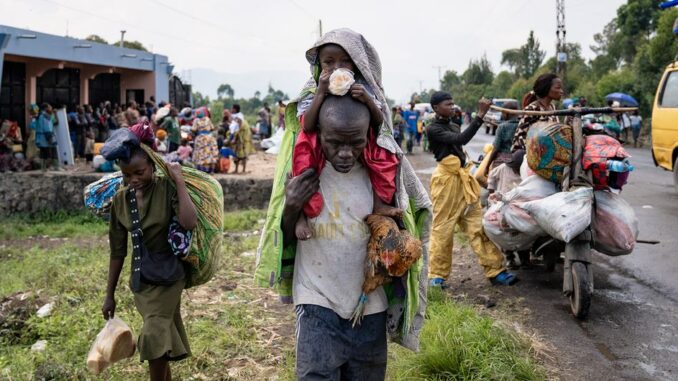
Thousands of displaced people have arrived at the outskirts of Goma in eastern Democratic Republic of Congo, carrying only what they can manage. The mass exodus follows rapid territorial gains by the M23 rebel group, which analysts say are more extensive than any it achieved during previous offensives in 2012 and 2013. The M23, a Tutsi-led insurgency formed after a failed 2009 peace accord, accuses the Congolese government of not honoring provisions intended to integrate Congolese Tutsis into national institutions.
A recent United Nations report estimates there are more than 8,000 M23 combatants, with some 5,500 recruited since September. Congo, alongside Western nations and the U.N., alleges that neighboring Rwanda supplies the group with troops and arms, an accusation Rwanda denies. Over the past week, M23 fighters captured the strategic town of Minova, roughly 40 kilometers from Goma, before advancing on Sake, located 20 kilometers away. Residents are fleeing in fear, often heading toward Goma with little food or shelter.
Control of mining areas is a major factor in the group’s expansion. For over a year, M23 has held Rubaya, where it earns roughly 800,000 dollars monthly by taxing the production of coltan, a mineral essential to electronics manufacturing. Observers warn that newly seized territories could further boost the rebels’ mining revenue. The Congolese army, which has battled M23 for nearly three years, acknowledges recent setbacks but has provided limited details. Meanwhile, attempts by Angola and other mediators to broker a ceasefire have stalled, leaving civilians on the move once again in a region already overwhelmed by conflict.
